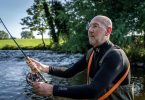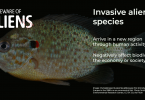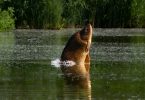Salmon are leaping back to the River Derwent in North Yorkshire and Environment Agency officers are hoping to work with anglers and organisations to make sure the fish are here to stay.
More than seven tonnes of salmon were recorded in the Ouse and Derwent catchments during 1946, but pollution and access to spawning grounds have meant that numbers have dwindled over the decades.
Now the migratory fish are back, and fisheries officers based in York are talking to landowners and anglers about how to encourage more salmon into the Derwent and its tributaries.
Fisheries team leader John Shannon said: “Last year a group of twelve anglers organised by the Salmon and Trout Association caught eight salmon in one day on one of the Ouse catchment rivers which is an incredible result. This reflects the work that has been done to open up the access to the Ouse river system and the improvements in water quality, in the Yorkshire area.
“Now we want to focus on improving access for the salmon to the Derwent by looking at obstructions to migration in the river such as Barmby Barrage, and the effectiveness of the fish passage along the full length of the river at locations such as Kirkham Weir.”
He believes the wet summer has also contributed to swelling salmon figures because high river flows have helped salmon over the obstructions.
Salmon need clean water to survive, and their presence in a river is one of the best indicators of water quality.
Kevin Sunderland has been researching the decline in salmon in the Derwent and helped to form the Derwent Salmon Group which is working with the Environment Agency on improvements.
He said: “The salmon is the king of fish. If a salmon can run the length of the river, it is likely that the river is in a good condition, and other species like eels and lamprey will be able to do the same. These species then attract other species and the river become a magnet for wildlife.”
Yorkshire Water has invested heavily in water quality improvements which has cleaned up the rivers in the region’s southern catchments, and as a result, these improvements have flowed into North Yorkshire’s rivers.







